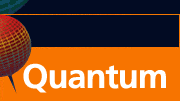CONTACTS
- Coordinator
Sebastian Deffner
-
Quantum Lunch Location:
T-Division Conference Room, TA-3,
Building 123, Room 121
 |


Quantum Institute: Visitor Schedule
The Quantum Lunch is regularly held on Thursdays in the Theoretical Division Conference Room, TA-3, Building 123, Room 121.
The organizing committee includes Malcolm Boshier (P-21), Diego Dalvit (T-4), Michael Di Rosa (C-PCS), Sebastian Deffner (T-4 & CNLS), Changhyun Ryu (P-21) , Nikolai Sinitsyn (T-4), Rolando Somma (T-4), Christopher Ticknor (T-1), and Wojciech Zurek (T-4).
For more information, or to nominate a speaker, contact Sebastian Deffner.
To add your name to the Quantum Lunch email list, contact Kacy Hopwood.
Thursday October 8, 2015
12:30 PM - 2:00 PM
Speaker: Luis Orozco (JQI and NIST)
Technical Host: Sebastian Deffner
TOPIC: Cavity QED a platform for quantum thermodynamic studies: environment-assisted speed-up
Abstract
Cavity Quantum Electrodynamics (QED) is an open quantum system where its
quantum dynamics lend themselves to detailed studies. We measure the
quantum speed of the field state evolution in a weakly driven optical Cavity QED
system. The system operates in the intermediate regime of cavity QED where the
single atom dipole coupling to the mode of the cavity is comparable to the decay
rate of the cavity and the spontaneous emission rate. We consider the mode of
the electromagnetic field as the quantum system of interest, with a preferential
coupling to a tunable environment: the atoms. By changing the number of atoms
coupled to the optical cavity mode, we have realized an environment-assisted
speed-up: the quantum speed of the state re-population in the optical cavity
increases with the coupling strength between the optical cavity mode and this
non-Markovian environment (the number of atoms). We find a non-linear
relationship between the quantum speed and the number of atoms in the system.
Work performed in collaboration with B. D. Patterson, A. D. Cimmarusti, Z. Yan,
L. P. Corcos, P. Solano, and S. Deffner.
The National Science Foundation of the United States, The Natural Science
Foundation of China, and the U.S. Department of Energy through a Los Alamos
National Laboratory Director's Funded Fellowship have supported this work. |


